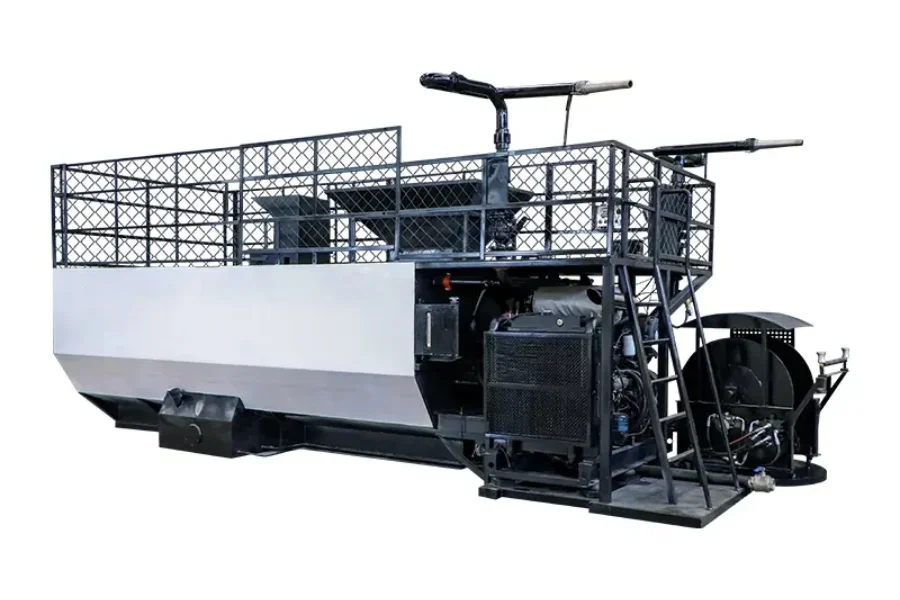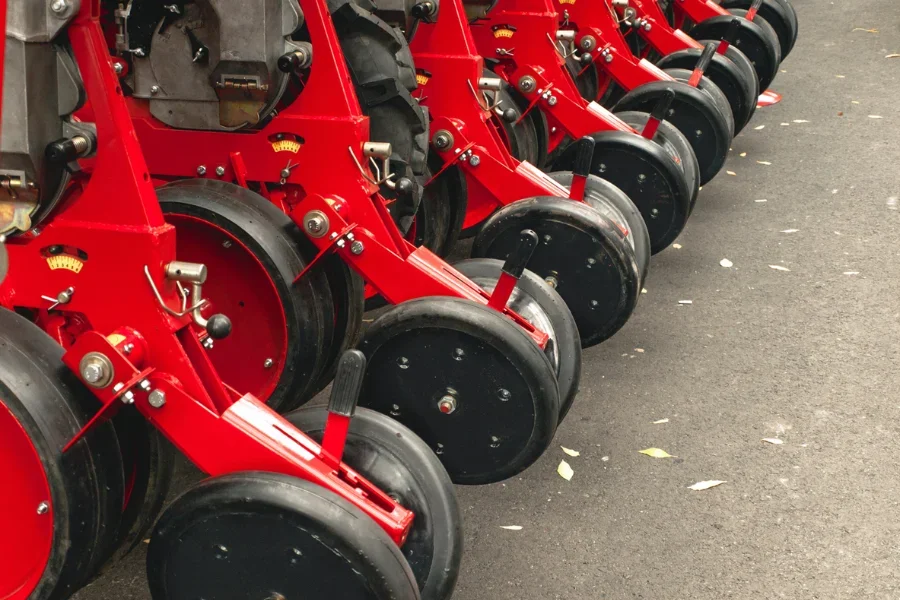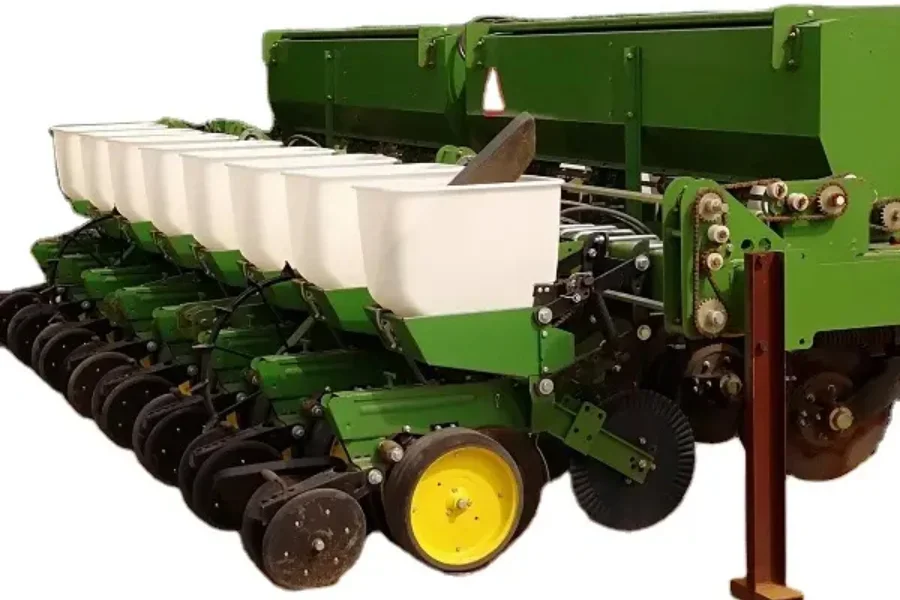Seeders are used by farmers all over the world to sow seeds of crops in the soil. Planters are machines attached to a tractor and they are also used for sowing large-sized seeds. Both of these machines come with a variety of benefits to users and that is what has led to increased demand in different regions including India. Before buying a planter or a seeder, it is essential to consider some factors like suitability, cost, reliability, and efficiency.
Continue reading to know the different types of planting and seeding equipment and how to select suitable seeders or planters. The share, size, demand, and expected growth of the seeders and planters market will be discussed as well.
Table of Contents
Market share of seeders and planters
Types of planting and seeding equipment
How to select suitable seeders or planters
Summary
Market share of seeders and planters
The seeders and planters market is segmented by specific types, designs, crop types, and regions. There has been a huge demand for this planting equipment as it reduces the effort and improves farm output. The growth in market size has also been driven by the little time taken by these machines to plant large pieces of land.
According to Vantage Market Research, the seeders and planters global market size was estimated to be USD 20.20 billion in 2021. It was further projected to expand at a compound annual growth rate (CAGR) of 6.3% to hit USD 30.98 billion by 2028. The market size grows as the demand for crops such as corn and wheat rises due to the increasing population.
Regionally, North America is the largest consumer of agricultural planting equipment in the world. This includes farmers in Canada and the US who have now increased the use of seeders and planters in farming. Most of these machines are manufactured by companies like John Deere, New Holland, Kubota Corporation, etc.
Types of planting and seeding equipment
1. Broadcast seeder

Broadcast seeders offer versatility in spreading seeds as they are carried or attached to the back of tractors. They are commonly used to spread seeds where no rows are required for planting, for instance, lawns, and wildflowers. The machine is easily used to plant seeds quickly over a large area of land. However, it results in a lot of waste when used because it is not accurate. Buyers can acquire simple, less costly broadcast seeders at a price range of around USD 40-50.
2. Air seeders

Air seeders are designed to plant round and small-sized seeds. Apart from delivering seeds, they can also spread fertilizer. This equipment is relatively larger than other seeders and can cover large farms to reduce field operations. It is designed to remove the need to till the soil before seeding. Also, air seeders prevent oversowing and mounting onto several tillage machines hence allowing buyers to till and seed one time. Nevertheless, in addition to the limitation on smaller seeds, the seed lines can get clogged while in operation. The cost of air seeders varies, but a buyer can purchase a high-precision no-till air seeder at around USD 15,000.
3. Row crop seeders

Row crop seeders are used to plant seeds in wider rows than those that are planted by grain drills. They are generally used to plant large seeds like soybeans, corn, and sunflowers on both small and large fields. Also, they can be used to plant small-seeded vegetable crops like radishes. These machines have a speed hopper, seed tube, metering unit, and pressing or closing wheels. Additionally, the cost of a row crop seeder with the aforementioned features can be below and above USD 2,000.
4. Seed drills
Seed drills are agricultural tools used to sow seeds in small, medium, and large-sized farms by measuring them and placing them in the soil at the required depth and distance. The mechanical components include the seedbox, frame, seed metering mechanism, furrow openers, covering device, and transport wheels. After placing the seeds, they cover them with soil to a certain depth that prevents insecticides or birds from reaching them. A large seed drill with a 36-row capability can cost between USD 5,000 and 55,000.
How to select suitable seeders or planters
1. Cost
Generally, the cost of super seeders starts from USD 1,500 going upwards and is dependent on the capability or complexity of the equipment. On the other hand, the cost of planters starts from as low as USD 2,000. There are additional costs when using this equipment, which include the repairs & maintenance costs and the cost of fuel. Buyers need to understand that the right choice of seeder or planter will save enormous amounts of time. Also, more precise seed placement reduces seed wastage.
2. Adaptability
Adaptability means the seeding equipment can readily be used if the conditions are changed. The right seeder should conserve the seeds when properly calibrated. This allows the buyers to plan their production needs and potential yields. Furthermore, they should be able to scale up or down, fertilize crops using the same equipment, swap out plants, or generally use seeders or planters in various circumstances.
3. Farm size
The choice of the seeder narrows down to the type of farm a buyer owns. The difference comes in when referring to whether it is commercial land or a home garden. Generally, buyers who run small farms have at least two options, which include a box drill or a planter. Those who own large farms can use planters, box drills, and air seeders. Also, the size of the seeds to be planted determines the type of seeding or planting equipment. For instance, large seeds work well with planters while small-sized seeds are suitable for air seeders. Most seeds can be planted by a box drill.
4. Versatility
The versatility of planting equipment is dependent on the various types of seeds a buyer intends to plant. It goes further to the required depth and distance needed during the seed placement. The appropriate choice of a seeder or planter will space seeds appropriately and create the required number and size of rows or beds. Also, considering the size and shape of the seeds, buyers would opt for pelleted seeds to ensure they flow easily.
5. Efficiency
Efficiency narrows down to how well a seeder or planter can be set up and calibrated to complete the given tasks. Most seeders and planters can be modified to accommodate different crops, sizes of seeds, or sets of seeding conditions. Buyers should spend the least time when making returns to fill in the bare spots and when thinning the overseeded rows. More efficient machines require minimized servicing and maintenance during the seeding operations.
6. Number of working lines (rows) and working width
With the implementation of seeders or planters, the row width has gradually reduced. Initially, rows were about 36-42 inches to accommodate the cultivators who used hoes to plant crops. Nowadays, optimal planters and seeders plant crops in rows with widths of about 4-10 inches. This has enhanced precision in seeding rates, seed placement, and singulation. Also, planters and seeders vary in size, as they can precisely plant seeds in a number of rows ranging from 1 to 54. Currently, the world’s biggest planter is the John Deere DB120, which has the capability to plant 48 rows.
Summary
Arriving at the appropriate choice of farm equipment for various tasks can be difficult. Buyers who intend to acquire machines for seeding need to understand that various seeds or grains can share seeders and planters. Generally, the physical responsibility of seeding rests on the type of seeder or planter being used. This includes manipulating soil, placing the seeds, and getting the seed off to proper growth. Based on the guide above, buyers should settle on the right planting equipment to achieve more returns on their investments. To find quality seeders and planters, visit Alibaba.com.



